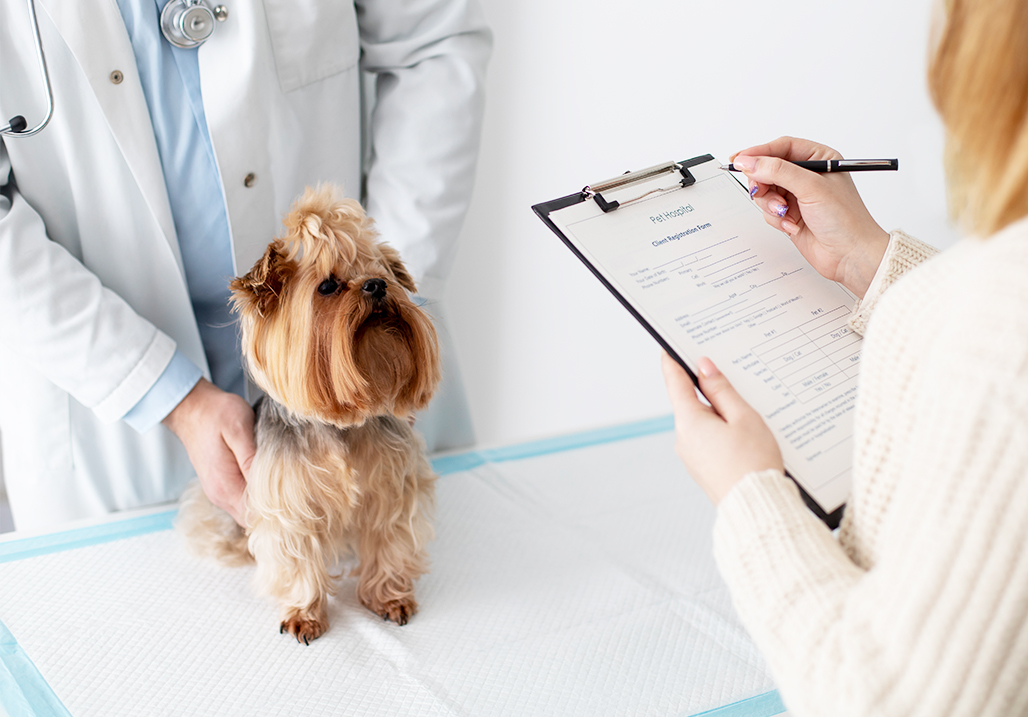Healing Paws: A Pet Parent's Guide to Administering Medicine to Ill Dogs
Sep 07,2023 | Petbobi
For many pet parents, ensuring our furry friends get the care they need during dog illness can be challenging, especially when medication is involved. However, understanding the effective methods for administering medicine can make the whole process less stressful for both you and your pet.
Why Medicine Matters?
When your furry family member falls ill, it's crucial that they receive the right treatment promptly. Much like humans, dogs need proper medical care, and that includes correctly administering their medication. Whether it's antibiotics for dogs fighting an infection or calming medicine to ease dog medicine anxiety, giving your dog the correct dosage at the right time is vital to their recovery and overall health.
Navigating the World of Canine Illnesses

Our furry friends may not be able to verbalize when they're feeling under the weather, but they sure can show it. Dogs can contract a spectrum of illnesses, similar in breadth to human ailments. Their conditions can span from a mild, common cold or an upset tummy, right up to more grave concerns such as heart disease or cancer.
Recognizing these potential health issues in dogs necessitates a keen eye for changes in your dog's behavior, eating habits, energy levels, and even physical appearance. By not missing your scheduled check-ups with your vet you can make sure to detect any issues early and be able to treat them accordingly. Consequently, the type of medication prescribed for your pet could cover a broad range.
It could be antibiotics for dogs needed to combat bacterial infections, which are common in dogs. For instance, skin infections (like hot spots), ear infections, or urinary tract infections are frequent issues where antibiotics are required.
Alternatively, it could be a calming agent to address dog medicine anxiety. Many dogs become nervous or stressed when it comes to taking their medication. Understanding the exact nature of your pet's health condition, the impact on their behavior, and how best to assist them through their recovery is paramount to effective treatment.
An Overview of Dog Medicines

Navigating the world of dog medication can sometimes feel like learning a new language. It's a complex landscape, filled with different categories of drugs designed to treat various conditions or symptoms.
- Antibiotics
Firstly, there are oral antibiotics for dogs that fight off infections. They work by either killing the bacteria or preventing them from multiplying. From Amoxicillin to Cephalexin, these antibiotics tackle a variety of infections in dogs.
- Medicine for Chronic Conditions
Then, there are medicines designed for chronic conditions. These could be anything from anti-inflammatories for arthritis pain to medications controlling seizures or heart conditions. These medications often need to be administered long-term and require a consistent schedule to be most effective.
- Creams and Ointments
Topical creams and ointments come into play for skin issues. Whether your dog has a minor rash, an insect bite, or a more severe skin infection, topical medications provide direct relief and healing to the affected areas.
- Anxiety Medicine
Lastly, we have products designed to help manage dog medicine anxiety. These can be essential for dogs that become particularly stressed or anxious around medicine time. Such products may include calming chews, diffusers, and even certain wearable items like anxiety wraps.
Each medicine type presents unique challenges for administration, requiring you as the pet parent to learn new techniques and strategies. The overall aim is to ensure your pet's comfort while ensuring they receive the treatment necessary for their recovery or ongoing health.
Strategies for Effective Medicine Administration
Administering medicine during periods of dog illness isn't always a walk in the park. It can feel like a game of hide and seek, with your pet's keen senses often sniffing out the hidden pill. However, several tried-and-true strategies can ease the process.
- Oral Medication

The taste or smell of certain medications, including antibiotics for dogs, can be off-putting to our canine companions. To work around this, a common strategy is to camouflage the pill in a treat or piece of food. Dog-friendly peanut butter, cheese, or special pill pockets available in pet stores can be excellent choices. Ensure your pet swallows the treat and doesn't spit out the medication. Some dogs are masters at eating the treat and leaving the pill behind!
For dogs who are not easily fooled or those on a special diet, direct oral administration might be necessary. Open your dog's mouth gently, place the pill as far back on their tongue as possible, then close their mouth and lightly stroke their throat to encourage swallowing. This process may require some practice and a calm, gentle approach to avoid causing stress for your dog, particularly those suffering from dog medicine anxiety.
- Topical Medication

When it comes to creams, ointments, or spot-on treatments, direct application to the affected area or skin is necessary. Administer as directed by your vet - this could mean applying to a clean, dry area, or perhaps after a bath, depending on the medication.
To stop your dog from licking off the medication, distraction can be key. Offering a treat, engaging in play, or using an e-collar can provide the medication time to absorb. Remember, your pet's tongue shouldn't be the first thing that medication comes into contact with after application!
- Injectable Medication

If your pet requires injections, the very thought can be intimidating. However, your vet can provide detailed instructions, demonstrations, and even practice sessions until you feel comfortable doing it at home. The key is to remain calm and confident - your pet can often pick up on your emotions. With time, giving injections can become just another part of your pet care routine during a dog illness.
Expert Advice for Overcoming Dog Medicine Anxiety

Just as humans can feel anxious about medication or medical procedures, so can dogs. Your pet's dog medicine anxiety around medication time can make an already challenging task even more difficult.
Speaking to your vet is a crucial first step. They can provide tailored strategies to help alleviate your pet's fear. This could involve creating positive associations with medication time, such as following it with a favorite treat or playtime.
Additionally, creating a calm environment can make a significant difference. This might involve choosing a quiet, comfortable space, speaking in a soothing tone, or even playing relaxing music. If the anxiety persists, there are also medications and products available that can help soothe your dog's nerves.
Administering medication effectively involves a blend of practical strategies and an empathetic understanding of your dog's feelings. With patience, consistency, and love, you can help ensure your pet's treatment is as stress-free and successful as possible.
Ensuring a Successful Health Journey for Your Dog
As pet parents, it's our responsibility to ensure our dogs get the best care possible when they're ill. By understanding the range of dog illnesses and the types of medicine available, and by applying effective methods for administering medication, we can make our dogs' health journeys easier and more comfortable. It may be challenging, but the wagging tail and energetic playtime that follow successful treatment make it all worth it.




